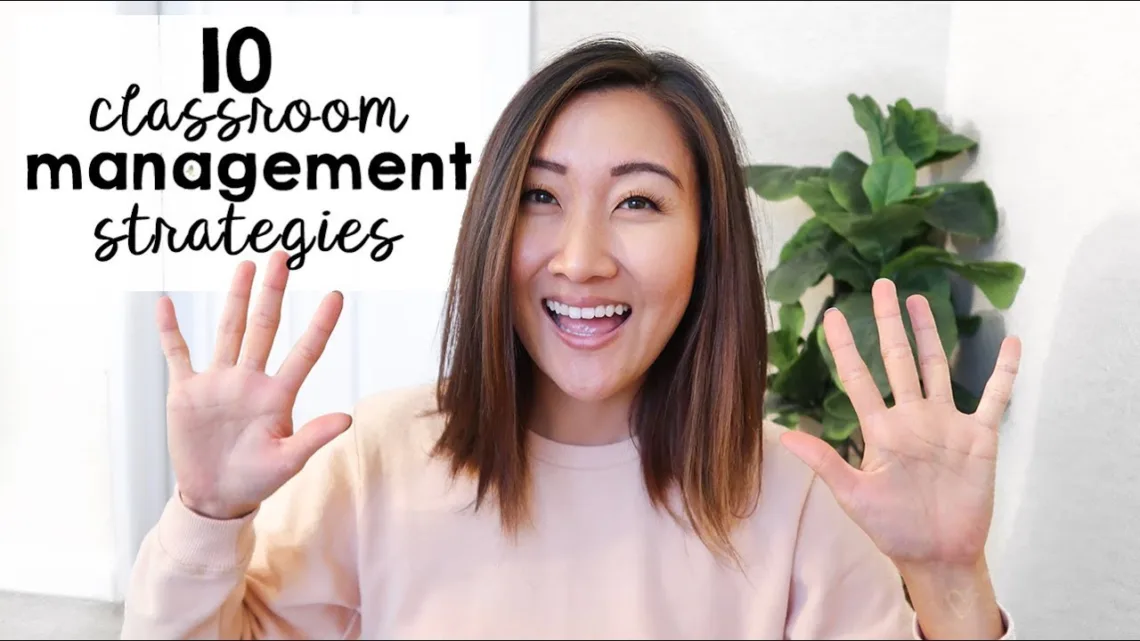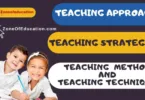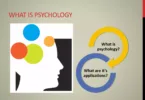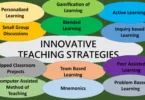There are hundreds of classroom management strategies but we will discuss the 10 Daily Classroom Management Strategies for Teachers. Effective classroom management is essential for creating a conducive learning environment. It is crucial for a teacher, to establish clear expectations and routines that help students stay focused and engaged. We will discuss ten daily classroom management strategies that can be implemented to ensure a smooth and productive learning experience for everyone. Effective classroom management is crucial for several reasons some of which are listed below. Good classroom management helps establish an atmosphere that is conducive to learning. When rules, routines, and expectations are clear, students feel secure and can focus on their studies without unnecessary distractions or disruptions. Classroom management strategies help maximize the time available for instruction by minimizing disruptive behaviors and transitioning smoothly between activities. This ensures that valuable learning time is not wasted on addressing behavioral issues.
Well-managed classrooms foster an environment where students feel comfortable participating, asking questions, and engaging in learning activities. This active engagement enhances their understanding and retention of the material. Consistent and fair implementation of classroom management strategies helps build mutual respect between teachers and students. This positive rapport facilitates effective communication and a collaborative learning environment. Creating an orderly and focused learning environment, and effective classroom management contributes to improved student achievement. Students can concentrate better, stay on task, and benefit from uninterrupted instruction. When teachers have a repertoire of effective classroom management techniques, they can approach their lessons with confidence, knowing that they can handle any potential disruptions or challenges that may arise.
Here are some key points from the provided transcript:
Everyday Classroom Management Techniques:
- Lining Up Before Entering: Ensure that kids are lined up outside the classroom before they enter, quietly and in an orderly manner.
- Write Down Required Materials: List everything needed for the class period on the board so that students know what they need without asking repeatedly.
- Countdown Strategy: Employ a countdown starting from five if students are sluggish in getting to their seats or transitioning, emphasizing the time they are wasting.
- Hand Signals: Use hand signals such as raising a hand to minimize interruptions in older students.
- Establish Good Sitting Behavior: Verbally encourage positive sitting posture to influence other students to adopt proper seating positions.
- Promote Active Listening: Discuss the concept of active listening to ensure that students are genuinely engaged with the speaker.
- Timed Clean-Up and Transition: Set a timer for 60-90 seconds for students to tidy up and transition to the next subject or activity.
- Managing Interrupting Behavior: Use a Post-it note system to tally instances of interruption and address the behavior at the end of the lesson.
- Photo Evidence of Classroom Behavior: Show students a picture of a messy area in the classroom to reinforce the importance of cleanliness and organization.
- Morning Meetings: Utilize morning meetings for social-emotional learning and games, fostering positive relationships with students.
Well-managed classrooms reinforce positive behaviors by consistently acknowledging and rewarding desired conduct. This positive reinforcement encourages students to develop self-discipline and take responsibility for their actions.
Set Clear Expectations
Before students enter the classroom, ensure they are lined up outside and ready to go. Emphasize the importance of being quiet and well-behaved. You can prevent disruptive behavior from spilling into the classroom by setting these expectations early. Before the start of the lesson, it’s beneficial for teachers to organize students outside the classroom, typically in a designated area such as a hallway or playground, depending on the school’s layout.
This practice serves several purposes:
Transition Time: Having students line up outside allows for a smoother transition into the classroom. It gives teachers a chance to prepare the classroom environment and mentally transition students from break time to learning time.
Organization: Lining up outside helps teachers take attendance, address any logistical issues, and ensure that all students are present and accounted for before they enter the classroom.
Establishing Routine: Consistently lining up outside before entering the classroom establishes a routine that students can anticipate and follow, contributing to a sense of structure and order in the learning environment.
Ensure They Are Ready to Go: Before students enter the classroom, teachers can remind them to have their materials ready, such as books, notebooks, pencils, or any other items required for the lesson. This helps minimize disruptions once inside the classroom and ensures that students are prepared to engage in the learning activities without unnecessary delays.
Emphasize the Importance of Being Quiet and Well-Behaved Upon lining up outside the classroom, teachers can take the opportunity to remind students of behavioral expectations. This includes maintaining quietness and exhibiting respectful and appropriate behavior while inside the classroom. Emphasizing these expectations before students enter sets a clear standard for behavior and helps prevent disruptive conduct that may interfere with the learning process.
Setting clear expectations before students enter the classroom is essential for effective classroom management and establishing a conducive learning environment. When expectations are communicated clearly and consistently, students understand what is expected of them and are more likely to comply. This contributes to a positive classroom culture where learning can thrive, as disruptions are minimized, and students feel safe and supported in their learning environment.
Why does Setting Clear Expectations Matter?
Clear expectations serve as a roadmap for students, guiding their behavior and actions within the classroom. When students know what is expected of them, they can focus their energy on learning rather than deciphering behavioral norms. This clarity minimizes disruptions and creates a sense of structure, leading to a more productive learning environment.
Effective communication is key to ensuring that expectations are understood by all students. Teachers should articulate expectations in a manner that is accessible and comprehensible to learners of diverse backgrounds and abilities. Utilizing visual aids, verbal cues, and written instructions can aid in reinforcing these expectations, leaving no room for ambiguity. Consistency is important in maintaining the integrity of classroom expectations. When rules and guidelines are enforced consistently, students learn to trust in the fairness of the system. Inconsistencies in enforcement can lead to confusion and resentment among students, undermining the effectiveness of established expectations.
Clear expectations contribute to the cultivation of a positive classroom culture characterized by respect, accountability, and mutual support. When students feel that their needs and boundaries are respected, they are more likely to engage actively in the learning process. Moreover, a supportive classroom environment encourages collaboration and empathy among peers, enriching the overall educational experience.
Well-defined expectations serve as a preventive measure against disruptive behavior. By clearly outlining acceptable conduct and consequences for non-compliance, educators preemptively address potential conflicts and disturbances. This proactive approach reduces the need for disciplinary action and promotes a sense of responsibility among students for upholding classroom norms. Setting clear expectations fosters a sense of safety and security within the classroom. When students know what is expected of them and understand the consequences of their actions, they feel empowered to express themselves freely and take academic risks. This psychological safety encourages intellectual curiosity and fosters a growth mindset conducive to learning.
Display Necessary Materials
To avoid constant repetition, write down everything students need for each class period on the board. This serves as a visual reminder and encourages students to take responsibility for their preparation. If students ask what they need, simply point them to the board or encourage them to ask a peer.
As students, teachers, and educationists, we all know the importance of being well-prepared for each class session. It’s not just about showing up; it’s about actively engaging in the learning process. One simple yet highly effective way to ensure preparedness is by displaying necessary materials prominently. Imagine walking into a classroom and immediately seeing everything you need for that day’s lesson neatly listed on the board. It’s like a roadmap for your learning journey, guiding you through the topics and resources required to succeed. This visual reminder serves as a powerful cue, prompting students to take ownership of their preparation.
For teachers, writing down the necessary materials on the board might seem like a small gesture, but its impact is significant. It streamlines the beginning of the class, eliminating the need for repetitive reminders. Instead of spending precious minutes reiterating what students should have brought, teachers can dive straight into the lesson content, maximizing instructional time. Displaying necessary materials fosters a sense of accountability among students. Seeing the requirements upfront, they understand what is expected of them and are encouraged to come to class prepared. It promotes a proactive approach to learning, where students take responsibility for gathering the tools and resources they need to fully participate in the lesson.
As an educator, I’ve witnessed firsthand how this simple practice transforms the classroom dynamic. Students are more engaged, knowing they have everything they need at their fingertips. They’re eager to delve into the material, knowing that they’re fully equipped to tackle the challenges ahead. And let’s not overlook the practicality of this approach. In a fast-paced educational environment, time is of the essence. By eliminating the need for individual inquiries about required materials, teachers can devote more attention to facilitating meaningful learning experiences. It’s a win-win situation for everyone involved.
So, next time you step into a classroom, whether as a student, teacher, or educationist, take a moment to appreciate the power of displaying necessary materials. It’s a small yet impactful strategy that sets the stage for success, paving the way for enhanced learning outcomes and a more efficient educational experience. Let’s make preparedness a priority and empower ourselves and our students to excel in every aspect of our educational journey. After all, when we’re equipped with the right tools and resources, there’s no limit to what we can achieve together.
Countdown Technique
When you notice students taking longer to settle down, use a countdown technique. Start from five and count down to one, signaling that it’s time to transition or begin an activity. This technique helps students understand the importance of time management and minimizes wasted class time.
Have you ever found yourself in a classroom where settling down after a break or transitioning between activities seems to take forever? As we know every minute counts, and minimizing downtime is crucial for maximizing instructional time. That’s where the countdown technique comes in handy.
Picture this: the bell rings, signaling the end of recess or group activity, and students are slow to return to their seats and focus on the next task. Instead of waiting indefinitely for everyone to settle down, I employ a simple yet effective strategy: the countdown technique. Starting from five and counting down to one, I use a clear and authoritative voice to signal to students that it’s time to transition or begin the next activity.
“Five… four… three… two… one.”
With each number, the sense of urgency increases, prompting students to wrap up their conversations, gather their materials, and direct their attention to the front of the room. What makes the countdown technique so powerful is its ability to communicate the importance of time management in a way that resonates with students. By visibly counting down, I’m not just signaling a change in activity; I’m reinforcing the value of using time wisely and staying focused on the task at hand.
This technique serves as a gentle reminder that every moment in the classroom is precious and should be used purposefully. It minimizes wasted class time by swiftly redirecting students’ attention and guiding them back on track. Moreover, it fosters a sense of responsibility among students, encouraging them to be proactive in managing their time and adhering to classroom expectations. I’ve found that the countdown technique is particularly effective with younger students or those who may struggle with transitions. Its simplicity makes it easy to implement consistently, and over time, students internalize the countdown as a cue to prepare for the next phase of the lesson.
But perhaps the most rewarding aspect of using the countdown technique is seeing its impact on classroom dynamics. Instead of chaos or disorganization, there’s a sense of order and purposefulness as students quickly respond to the countdown and seamlessly transition to the next activity.
The next time you find yourself facing a classroom that’s slow to settle down, remember the power of the countdown technique. With just a few simple words, you can reclaim precious minutes of instructional time and instill valuable lessons about time management and focus. It’s a small but mighty strategy that makes a world of difference in the classroom environment.
Use Hand Signals
Implement hand signals to minimize interruptions. For example, encourage students to use a specific hand signal when they need to use the restroom. This way, they can communicate their needs without disrupting the flow of the class. Consistency in using hand signals helps establish a respectful and efficient classroom environment. In a bustling classroom filled with eager learners, it’s essential to establish clear communication channels that minimize interruptions and maintain the flow of instruction. One powerful tool in achieving this goal is the use of hand signals.
A student suddenly needs to use the restroom in the middle of a lesson. Instead of blurting out their request and disrupting the entire class, they simply raise a specific hand signal agreed upon beforehand. It’s a subtle yet effective way of communicating their needs without causing a disturbance. I’ve witnessed firsthand the transformative impact of implementing hand signals in the classroom. Providing students with a designated signal for common requests such as restroom breaks or needing assistance, can empower them to communicate discreetly and respectfully.
From day one, I establish clear expectations regarding the signals and encourage students to use them consistently. Whether it’s holding up two fingers for a restroom break or forming a question mark with their hand for clarification, these signals become ingrained in the classroom culture. The benefits of using hand signals extend beyond minimizing disruptions. They also promote a sense of responsibility and independence among students. Instead of relying on verbal cues or seeking constant approval from the teacher, students learn to advocate for their needs in a manner that respects the learning environment and their peers.
Incorporating hand signals fosters a more inclusive classroom environment. For students who may be hesitant to speak up or who have communication challenges, hand signals provide an alternative means of expression, ensuring that everyone’s needs are acknowledged and addressed. But perhaps the most significant advantage of using hand signals is the sense of camaraderie and mutual respect they cultivate within the classroom community. When students see their peers using signals appropriately, they are more likely to follow suit, creating a culture of cooperation and consideration.
It’s our responsibility to create environments where all students feel valued and supported. By implementing hand signals, we not only streamline classroom management but also empower students to take ownership of their learning experiences. Together, let’s embrace the power of nonverbal communication and foster a classroom environment where every voice is heard, even if it’s expressed through a simple hand signal.
Promote Good Sitting Habits
Encourage students to demonstrate good sitting posture and attentiveness. Acknowledge and praise those who are sitting up straight and paying attention. This positive reinforcement motivates other students to follow suit, creating a more focused and active learning environment.
Cultivating an environment conducive to learning goes beyond just delivering content—it involves nurturing habits that support students’ physical and mental well-being. One such habit that often goes overlooked is good sitting posture, and it plays a significant role in fostering attentiveness and engagement in the classroom.
A classroom filled with students eagerly participating in a lesson, their postures upright and attentive. It’s not just a coincidence—it’s the result of intentional efforts to promote good sitting habits and encourage students to take ownership of their physical presence in the learning environment.
We understand the importance of setting the stage for success by prioritizing proper sitting posture. I start by explicitly discussing the benefits of sitting up straight, such as improved concentration, reduced fatigue, and better overall health. By helping students understand the rationale behind good posture, they become more invested in adopting and maintaining it.
But promoting good sitting habits isn’t just about preaching; it’s about modeling and reinforcing positive behavior. During lessons, I make a conscious effort to acknowledge and praise students who demonstrate good sitting posture and attentiveness. Whether it’s a simple nod of approval or verbal recognition, these moments of positive reinforcement go a long way in motivating other students to follow suit. I integrate interactive activities and exercises into lessons that encourage students to be mindful of their posture. From brief stretching breaks to incorporating ergonomic seating options, I provide opportunities for students to actively engage with the concept of good sitting habits and experience firsthand the benefits it brings to their learning experience.
The impact of promoting good sitting habits also fosters a more focused and active learning environment. When students are comfortable and properly aligned, they’re better able to absorb information, participate in discussions, and contribute meaningfully to classroom activities. Perhaps the most rewarding aspect of promoting good sitting habits is witnessing the transformation in students’ attitudes toward their well-being. By instilling habits that support their physical health and academic success, we empower students to take ownership of their learning journey and cultivate habits that will serve them well beyond the classroom.
Teach Active Listening
Explain to students that listening goes beyond just looking at the speaker. Emphasize the importance of active listening, which involves understanding and responding to what the speaker is saying. Encourage students to repeat or summarize what their classmates or teacher has said to demonstrate active listening skills.
Fostering effective communication skills is paramount to creating an environment conducive to learning. Central to this is the concept of active listening—an indispensable skill that extends beyond merely hearing the words spoken by a speaker. Instead, active listening involves fully engaging with the speaker’s message, understanding its nuances, and providing thoughtful responses.
It is imperative to impress upon students that active listening is a multifaceted process that requires their full attention and engagement. Merely looking at the speaker is insufficient; students must actively process and internalize the information being conveyed. This entails focusing not only on the speaker’s words but also on their tone, body language, and underlying messages.
Emphasizing the importance of active listening serves to underscore its role in facilitating effective communication and meaningful interactions. By actively engaging with the speaker’s message, students demonstrate respect for their peers and teachers while also deepening their understanding of the subject matter.
One practical way to cultivate active listening skills is through the technique of repetition or summarization. Encourage students to periodically repeat or summarize what their classmates or teacher has said during discussions or lectures. This not only demonstrates their comprehension of the material but also reinforces their engagement with the topic at hand.
Through consistent practice and reinforcement, students can develop proficiency in active listening, thereby enhancing their communication skills and academic performance. Moreover, instilling the habit of active listening equips students with a valuable lifelong skill that extends beyond the classroom and into various facets of their personal and professional lives.
Promoting active listening among students is integral to creating an environment conducive to effective communication and learning. By emphasizing the importance of fully engaging with the speaker’s message and encouraging active participation through repetition or summarization, educators can empower students to become active listeners who are capable of navigating complex ideas and engaging in meaningful dialogue.
Use Timers for Transitions
Display a timer on the board and allocate a specific time for students to put away their materials, hand in their work, and transition to the next activity or class. This helps students develop a sense of responsibility and time management skills. Additionally, ensure that the classroom is tidy before moving on to the next subject or activity. Smooth transitions between activities are crucial for maximizing instructional time and maintaining a conducive learning environment. One effective strategy to facilitate seamless transitions is the use of timers.
Prominently displaying a timer on the board and allocating specific time intervals for various tasks, educators can provide students with a clear framework for managing their time and responsibilities. Whether it’s putting away materials, handing in assignments, or transitioning to the next activity or class, the timer serves as a visual cue that helps students stay organized and on track. The implementation of timers not only encourages students to develop essential time management skills but also fosters a sense of responsibility and autonomy. As they become accustomed to adhering to designated timeframes, students learn to prioritize tasks, allocate their time effectively, and take ownership of their academic responsibilities.
Incorporating timers into classroom routines promotes a sense of structure and predictability, which is especially beneficial for students who thrive in environments with clear expectations and routines. Providing a tangible measure of time educators can mitigate potential disruptions and keep students focused and engaged throughout transitions.
It is essential to ensure that the classroom environment remains tidy and organized during transitions. Encourage students to take ownership of maintaining cleanliness by allocating a few moments at the end of each activity to tidy up their workspaces and communal areas. This practice not only instills a sense of respect for the learning environment but also fosters a collective sense of responsibility among students.
The strategic use of timers for transitions is a valuable tool in promoting efficient time management, fostering responsibility, and maintaining a structured learning environment. By incorporating timers into classroom routines and emphasizing the importance of tidiness, educators can empower students to navigate transitions seamlessly and maximize their learning potential.
Address Continuous Interruptions
If a student constantly interrupts during class, try using a visual reminder. Place a post-it note on their desk and make a tally mark each time they interrupt. After the lesson, have a private conversation with the student, discussing the impact of their interruptions on the class. Reinforce the expectation of listening attentively and only speaking when given permission.
It’s important to acknowledge and address disruptive behaviors in a constructive and supportive manner. Placing a discreet visual cue, such as a post-it note, on the student’s desk serves as a tangible reminder of their interruptions. Each time the student disrupts the class, a tally mark is added to the note.
After the lesson concludes, it’s crucial to have a private conversation with the student to discuss their behavior. Approach the conversation with empathy and understanding, recognizing that there may be underlying reasons for their interruptions. However, also emphasizes the importance of respecting the learning environment and the impact of their actions on their peers and the overall classroom dynamic.
During the conversation, reinforce the expectation of listening attentively and speaking only when given permission. Encourage the student to reflect on their behavior and brainstorm alternative ways to express their thoughts or questions without disrupting the class. By involving the student in problem-solving, you empower them to take ownership of their actions and work towards positive change.
It’s also important to offer support and encouragement to the student as they strive to improve their behavior. Consider implementing a reward system or positive reinforcement strategy to recognize their efforts in minimizing interruptions. Additionally, maintain open lines of communication with the student and provide ongoing feedback and support as needed.
Addressing continuous interruptions requires patience, consistency, and a collaborative approach between educators and students. By utilizing visual reminders, having private conversations, and reinforcing expectations, we can create a classroom environment where all students feel valued, respected, and able to fully engage in the learning process.
Show Visual Evidence
Imagine a corner of our classroom where our bookshelf stands, brimming with resources and materials to support our learning journey. However, upon closer inspection, you may notice a bit of disarray—books haphazardly stacked, papers askew, and supplies scattered. This clutter not only detracts from the aesthetic appeal of our learning environment but also hinders our ability to access resources efficiently.
Now, let’s envision sharing a visual representation of this area with the class. By capturing a photograph and displaying it for all to see, we can collectively examine the state of our classroom and reflect on the importance of cleanliness and organization. This visual evidence serves as a tangible reminder of the impact of our actions on the overall classroom environment.
Through this shared experience, we engage students in a meaningful conversation about the significance of maintaining a tidy and organized space. We discuss the practical benefits of organization, such as easy access to materials and enhanced productivity. Moreover, we emphasize the collective responsibility we all share in contributing to a positive learning environment.
Involving students in this process, we empower them to take ownership of their classroom and instill a sense of pride in maintaining its cleanliness and organization. Together, we can work towards creating a space where every student feels valued, respected, and able to thrive academically.
Morning Meetings
Morning meetings are a cornerstone of our classroom routine, providing a dedicated time for us to come together as a community and nurture not only our academic growth but also our social and emotional well-being. These meetings serve as invaluable opportunities to connect on a deeper level, fostering a sense of belonging and understanding among students.
During our morning meetings, we prioritize social-emotional learning, recognizing its fundamental importance in shaping our overall development. Through engaging activities and thoughtful discussions, we explore topics such as empathy, communication, resilience, and self-awareness. Delving into these themes, we not only enhance our emotional intelligence but also cultivate a supportive and inclusive classroom environment where every voice is heard and valued.
One of the key objectives of our morning meetings is to strengthen relationships and build a sense of community among students. We engage in interactive games and team-building activities that promote collaboration, communication, and trust. Whether it’s solving a problem together, sharing personal reflections, or simply laughing and bonding as a group, these experiences foster a profound sense of connection and camaraderie among us.
Morning meetings provide a platform for students to express themselves authentically and develop essential social skills. Through activities such as role-playing, sharing experiences, and practicing active listening, students learn to navigate interpersonal dynamics, resolve conflicts constructively, and cultivate empathy and understanding toward their peers.
The impact of morning meetings extends far beyond the classroom walls. By fostering positive relationships and emotional resilience, we equip students with essential tools for success both academically and in life. Moreover, we lay the foundation for a classroom culture characterized by mutual respect, empathy, and support—a culture that permeates every aspect of our learning journey.
Morning meetings are more than just a routine—they are a vital component of our classroom community. By dedicating time to social-emotional learning, engaging in meaningful activities, and nurturing relationships, we create an environment where students feel empowered, supported, and valued. Together, we embark on each day with a renewed sense of purpose and connection, ready to learn, grow, and thrive as a community.
Effective classroom management is crucial in creating a productive and engaging learning environment. By implementing strategies such as setting clear expectations, using visual cues, and promoting active listening, teachers can establish a positive classroom culture that supports student growth and success. Remember, managing a classroom is an ongoing process that requires reinforcement and consistency. With these ten strategies in place, teachers can effectively manage their classrooms and create an optimal learning environment for all students.
References
- Prodigy Game – Classroom Management Strategies and Techniques
- Varthana – Classroom Management Skills, Strategies Every Teacher Should Know
- Twinkl – Top 10 Classroom Management Strategies
- University of the People – Best Classroom Management Strategies To Ensure Success
- Twin Science – 10 Tips for Effective Classroom Management
- We Are Teachers – 23 Brilliant Classroom Management Strategies








[…] multitude of factors combine to create an environment that is conducive to learning. Classroom management is a fundamental component that is frequently overlooked, even though engaging curriculum and […]
[…] increases the probability of a response that removes or prevents an adverse condition. Many classroom teachers mistakenly believe that negative reinforcement is punishment administered to suppress behavior; […]
[…] A kindergarten teacher incorporates daily routines that involve both structured learning activities and unstructured playtime. This approach […]
[…] Here are 41 assessment strategies to consider implementing in your classroom: […]
[…] in the classroom is essential for teachers to gauge the progress and understanding of their students. Teachers should evaluate students’ […]
[…] for learning, or formative assessment, is an ongoing and continuous process that allows teachers to monitor students’ performance daily. Its primary objective is to provide timely and specific feedback to students, enabling them to […]
[…] potential outcomes and encourages them to make better choices and take ownership of their behavior. Teachers can foster a classroom environment conducive to learning and personal growth through a well-designed and consistently […]
[…] Relationships: Building positive relationships with students is crucial for effective classroom management. When students feel valued, respected, and connected to their teacher, they are more motivated to […]
[…] Modeling is a strategy where teachers demonstrate the desired behavior or skill to students. By observing the teacher’s actions, […]
[…] create a conducive learning environment. One such approach that has gained attention is indulgent classroom management. Unlike authoritarian or permissive management styles, which may emphasize strict control or […]
[…] is a lifelong process, and both teachers and students can benefit from adopting effective learning strategies. In this blog, we will explore 13 scientific strategies that can help students increase their […]
[…] manage and guide these behaviors to create a conducive learning environment. This is where behavior management strategies come in. By understanding the significance of these strategies, we can learn how to implement them […]
[…] critical aspect of essentialist classroom management is the use of positive reinforcement. Essentialist teachers may use rewards, such as praise or […]
[…] To effectively implement cooperative learning in the classroom, teachers can consider the following strategies: […]
[…] this, a detailed examination of various classroom management strategies takes place. These include proactive and reactive, relationship-building, instructional, and […]
[…] while you gain time for tasks such as attendance and resource preparation. Effective time management ensures that the daily agenda of the classroom remains […]
[…] therapies, or pharmacological treatments, contributing to a nuanced understanding of effective strategies for managing […]
[…] and reinforcing positive behavior is an essential aspect of classroom management. Praising students for their efforts, achievements, and adherence to classroom expectations […]
[…] teachers may encounter several challenges when integrating CLT into their language classrooms. One of the hurdles is managing large class sizes. CLT thrives in smaller groups where […]
[…] techniques. Recognizing that students possess varying abilities, interests, and learning styles, teachers use strategies to accommodate these differences and ensure equitable access to education. This may involve […]
[…] classroom observations or peer evaluations to assess the implementation of innovative teaching strategies and their impact on student engagement, participation, and learning outcomes. Observe student […]
[…] authoritarian classroom management style is characterized by a strong emphasis on teacher control and strict adherence to rules. While this […]
[…] that we understand the concepts of measurement, assessment, and evaluation, teachers must implement effective assessment strategies in their classrooms. Assessments play a vital role in education, providing valuable insights into students’ progress […]
[…] The following are the 12 Effective Classroom Management Strategies for New Teachers: […]
[…] classroom management is intricately woven into teachers’ qualities, techniques, and skills, enabling all students to […]
[…] and interaction among students. By actively involving students in the learning process, teachers create a dynamic classroom environment conducive to deeper understanding and retention of […]